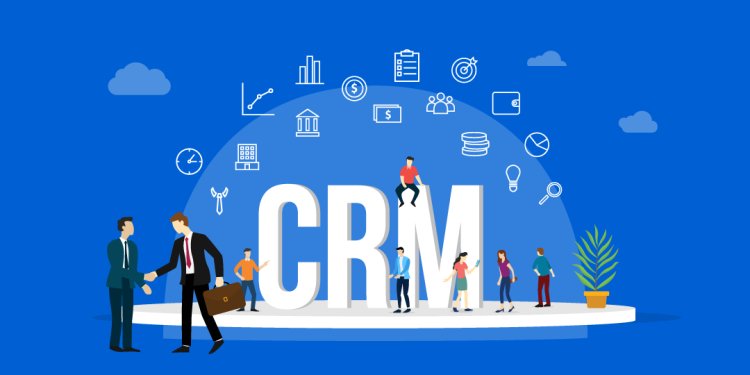Common CRM Software Issues and How to Overcome Them
Identifying and addressing CRM software issues early can prevent inefficiencies and maximize the software’s potential. In this article, we’ll explore some of the most common CRM software problems and provide practical solutions to overcome them.

Customer Relationship Management (CRM) software plays a vital role in helping businesses streamline operations, manage customer data, and improve sales processes. However, despite its benefits, many organizations face challenges when implementing and using CRM systems. Identifying and addressing CRM software issues early can prevent inefficiencies and maximize the software’s potential.
In this article, we’ll explore some of the most common CRM software problems and provide practical solutions to overcome them.
1. Poor User Adoption
The Issue:
One of the biggest challenges businesses face with CRM software is low user adoption. Employees often resist using a new system due to a lack of training, complexity, or perceived inefficiencies compared to their existing workflows.
The Solution:
Provide Comprehensive Training: Ensure all employees receive proper training on how to use the CRM effectively.
Choose an Intuitive CRM: Select a CRM platform that is user-friendly and aligns with your team’s needs.
Encourage Adoption: Involve employees in the decision-making process and highlight the benefits of using the CRM for their daily tasks.
2. Data Inaccuracy and Duplication
The Issue:
CRM systems rely on accurate data for effective decision-making. However, many businesses struggle with duplicate, outdated, or incorrect customer records, leading to inefficiencies.
The Solution:
Implement Data Validation Rules: Use built-in CRM features to prevent duplicate entries and ensure data accuracy.
Regular Data Audits: Conduct routine data cleaning to remove redundant or outdated information.
Integrate Automation Tools: Leverage AI and automation to update and verify customer data in real time.
3. Integration Challenges
The Issue:
A CRM should work seamlessly with other business tools like email, marketing automation, and ERP systems. However, many businesses encounter integration issues, resulting in data silos and inefficiencies.
The Solution:
Choose a CRM with Open APIs: Ensure the CRM software supports integration with other key business applications.
Use Third-Party Connectors: Platforms like Zapier and MuleSoft can help bridge the gap between incompatible systems.
Work with IT Experts: Involve IT professionals to configure and troubleshoot integrations effectively.
4. Lack of Customization Options
The Issue:
Not all CRM solutions fit every business model. A rigid system that doesn’t allow customization can limit functionality and impact productivity.
The Solution:
Select a Flexible CRM: Look for a CRM that offers customization in workflows, dashboards, and reporting.
Leverage Custom Fields and Modules: Modify fields and layouts to match your business’s specific needs.
Work with CRM Developers: If needed, hire a CRM consultant or developer to tailor the software to your operations.
5. Security and Compliance Risks
The Issue:
CRM software stores sensitive customer data, making it a target for cyber threats. Non-compliance with industry regulations (e.g., GDPR, HIPAA) can also lead to legal issues and reputational damage.
The Solution:
Implement Strong Security Measures: Use encryption, multi-factor authentication (MFA), and role-based access controls.
Regular Security Audits: Conduct periodic security assessments to identify and mitigate vulnerabilities.
Ensure Compliance: Choose a CRM that complies with industry standards and legal regulations.
6. Overcomplicated Features
The Issue:
Many CRM platforms come loaded with features, but not all businesses need them. A complex CRM can overwhelm users, leading to frustration and reduced efficiency.
The Solution:
Identify Essential Features: Focus on the functionalities that align with your business goals.
Simplify User Interface: Customize dashboards to display only relevant data.
Provide Ongoing Support: Offer helpdesk support and training to assist employees in navigating the system efficiently.
7. Poor Reporting and Analytics
The Issue:
One of the key advantages of a CRM is data-driven decision-making. However, if reporting tools are inadequate or difficult to use, businesses may struggle to extract valuable insights.
The Solution:
Use Advanced Reporting Tools: Opt for CRMs that provide custom reports, real-time analytics, and AI-driven insights.
Train Users on Reporting Features: Ensure employees understand how to generate and interpret reports.
Automate Report Generation: Schedule automated reports to keep stakeholders informed regularly.
Conclusion
CRM software is a powerful tool, but CRM software issues can hinder its effectiveness if not addressed. By proactively identifying challenges such as poor adoption, data inaccuracies, integration difficulties, and security concerns, businesses can optimize their CRM usage and improve overall efficiency.
Choosing the right CRM, investing in proper training, and leveraging automation and customization can help businesses maximize the benefits of their CRM system. With the right strategies in place, companies can transform their CRM into a valuable asset for sales, marketing, and customer service success.
What's Your Reaction?














